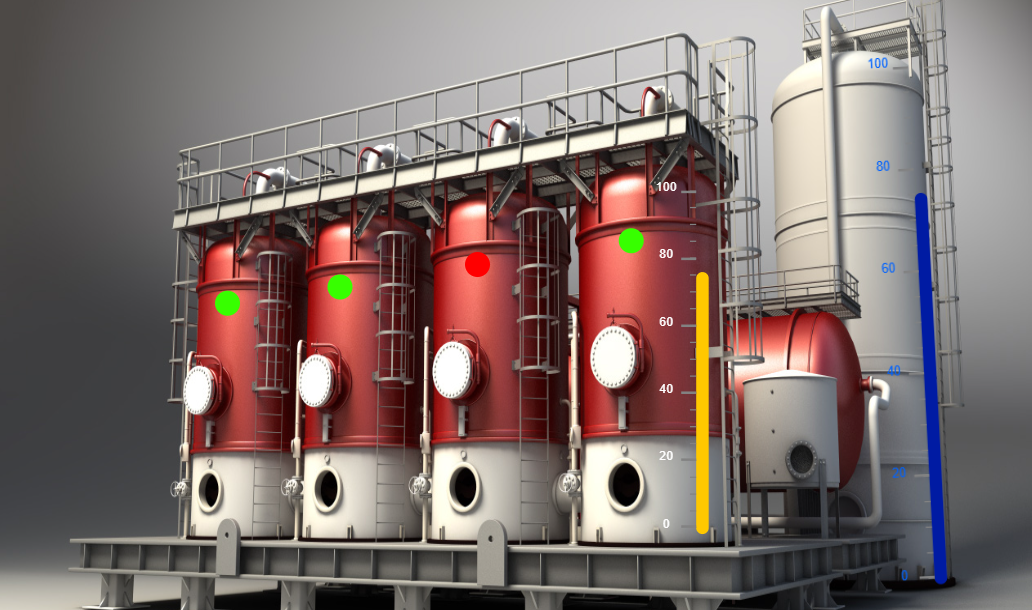What are alarms used for?
Alarm Management serve as critical tools in various fields, providing early warnings to help prevent accidents, failures, or issues from escalating. They are employed across industries such as manufacturing, healthcare, transportation, and home security. Understanding
what are alarms used for
can provide insight into the key roles alarms play in ensuring safety, monitoring systems, and managing risks. In this article, we’ll explore the types of alarms, alarm management systems, and industry standards that ensure alarms are effective in maintaining operational integrity.

What are Alarms Used For?
Alarms are primarily used to alert individuals to abnormal conditions or potential hazards in a system, process, or environment. In industrial settings, for instance, alarms can be used to signal system failures, equipment malfunctions, or the presence of hazardous conditions. In healthcare, alarms notify medical staff of changes in a patient’s condition, while in home security, alarms are set off when unauthorized access is detected.
The purpose of alarms extends beyond just providing warnings. Alarms also play an essential role in:
- Preventing accidents: They give operators or individuals early warnings to act before a situation escalates into a dangerous or costly event.
- Monitoring systems: Alarms can be integrated into monitoring systems to keep track of processes, whether it's temperature, pressure, or other key parameters.
- Risk management: In complex environments like manufacturing plants, alarms help identify when safety protocols are compromised, ensuring quick responses to minimize risks.
Which are the Standards for Alarm Management?
In alarm management, standards and best practices are essential to ensure alarms are useful and not overwhelming. Adhering to alarm management standards and best practices can prevent alarm fatigue, which occurs when alarms become so frequent that they are ignored, diminishing their effectiveness.
The Standards for Alarm Management are set by several key organizations, such as:
- ISA-18.2: This is the international standard for alarm management in process industries. It provides guidelines for designing, implementing, and maintaining alarm systems to ensure they meet operational safety needs.
- IEC 62682: This standard focuses on the process of designing, managing, and maintaining alarm systems, with an emphasis on the operational lifecycle of alarms.
By following these standards, organizations ensure that alarm systems are not only efficient but also aligned with safety and operational requirements.
What are the 3 Main Types of Alarms?
There are several types of alarms, but the most common ones fall into the following three categories:
Process Alarms: These alarms are related to industrial processes. For example, they might notify operators of abnormal pressure, temperature, or flow rates that could lead to a malfunction or system failure.
Security Alarms: These alarms are used in settings such as homes, offices, and facilities to detect unauthorized access or criminal activity. Security alarms can include motion detectors, door/window sensors, or surveillance alerts.
Medical Alarms: In healthcare, alarms are used to monitor patient vitals, such as heart rate, oxygen levels, and blood pressure. These alarms alert medical personnel to any significant changes in a patient’s condition.
Additionally, there are 4 types of alarm systems commonly used in various applications:
- Audible Alarms: These produce sound to alert individuals to a situation.
- Visual Alarms: These use lights or other visual indicators to signal that attention is required.
- Textual Alarms: These provide text-based warnings, such as alerts on control screens or devices.
- Combined Alarms: These use both audible and visual signals for enhanced notification.

What is an Alarm Management System?
An alarm management system refers to the set of processes, policies, and tools used to design, implement, and maintain alarm systems. The goal is to ensure that alarms are effective, properly configured, and maintained throughout their lifecycle.
ISA alarm management is a recognized approach to alarm management, focusing on the entire system, from initial alarm configuration to ongoing optimization. The system is designed to prevent issues like alarm overload, where too many alarms go off simultaneously, causing confusion and potentially leading to critical alerts being missed. Key features of alarm management systems include:
- Alarm rationalization: Prioritizing alarms based on their criticality.
- Alarm shelving: Temporarily muting alarms when they are known to be non-critical.
- Alarm analytics: Continuously reviewing alarm data to improve system performance.
What is a SCADA Alarm?
A SCADA alarm (Supervisory Control and Data Acquisition alarm) is a type of alarm used in industrial control systems that monitor and control infrastructure such as water treatment plants, power stations, and oil refineries. SCADA systems collect real-time data, and alarms within these systems are triggered when abnormal conditions or faults occur.
SCADA alarm management software helps monitor and manage alarms, ensuring that critical alerts are delivered promptly. It also allows operators to acknowledge alarms and take appropriate corrective actions.
What is the Governing Standard for Alarm Systems?
The governing standard for alarm systems is the ISA-18.2, a comprehensive framework that outlines the management of alarms in industrial environments. This standard defines the practices for the design, configuration, implementation, operation, and maintenance of alarm systems, aiming to reduce risks associated with poor alarm management and improve operational efficiency. Additionally, IEC 62682 provides international guidance on the lifecycle management of alarms, focusing on the improvement and sustainability of alarm systems.
What are the Levels of SCADA Alarm?
In SCADA systems, alarms are often categorized into different levels to signify their urgency. The typical Levels of SCADA Alarm include:
- Low Priority: These alarms indicate a minor issue or non-critical event that does not require immediate action but should be reviewed.
- Medium Priority: These alarms are more serious and should be addressed in a timely manner, as they could indicate potential issues in the system.
- High Priority: These alarms require immediate action to prevent a hazardous situation or equipment damage.
- Critical Priority: These are urgent alarms indicating immediate threats to the system or human safety, requiring immediate intervention.

What are the SCADA Alarm States?
SCADA systems also categorize alarms based on their SCADA Alarm States. These states help operators understand the current condition of an alarm and determine the appropriate response. The main SCADA alarm states include:
- Active: The alarm is currently in effect and requires attention.
- Acknowledged: The alarm has been recognized, but no corrective action has been taken yet.
- Shelved: The alarm has been temporarily suppressed, often due to a known issue that doesn't require immediate intervention.
- Return to Normal: The condition triggering the alarm has been resolved, and the system has returned to a safe state.
What are the SCADA Alarm States?
SCADA systems also categorize alarms based on their SCADA Alarm States. These states help operators understand the current condition of an alarm and determine the appropriate response. The main SCADA alarm states include:
Conclusion
In summary, alarms in SCADA systems are essential tools for maintaining operational safety and efficiency. By adhering to industry standards like ISA alarm management or EEMUA alarm management, organizations can improve their alarm systems and reduce the risks of operator overload. To ensure that your alarm system is running effectively, consider investing in alarm management software and other solutions that optimize alarm logging and notifications.
If you're looking for reliable solutions to manage your alarms, check out our comprehensive services for Alarm Logging & Notification to ensure that your systems are always running smoothly, contact us today!
You might also like



